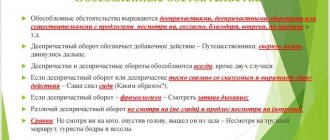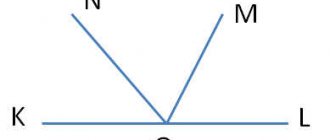Life Safety Test Grade 7
7th grade life safety tests option 1.
A table with answers to the test is at the end of the article.
1. What are the sources of danger in the premises?
+ A) Fire;
B) Lack of telephone, air conditioning;
+ B) Flooding;
D) Lack of electricity.
5. Which types of transport must be avoided only from the front?
A) Trolleybus;
B) Airplane;
+ B) Electric train;
+ D) Tram;
D) Bus;
E) Metro.
7. What are the main ways to protect your home from criminals?
+ A) security alarm
+ B) storing keys in a place inaccessible to other people
+ C) do not open the door to visitors without examining them through the peephole.
D) Yorkshire Terrier
8. What can help you avoid attracting attention from criminals:
A) to increase your status among your peers, you should always keep mobile phones, mp3 players, photo and video cameras in plain sight.
+ B) modest, neat clothing, without the use of unnecessary accessories
C) use of bright makeup, high-heeled shoes and a minimum amount of clothing.
9. Prohibiting road signs include:
A) round or square signs on a blue background.
B) triangular signs with a red border around the perimeter.
+ B) round signs with a red border around the perimeter.
D) signs made on a white background in a blue frame.
10. Behaving correctly on the beach means:
A) after getting very warm in the sun, take a running plunge into cool water;
B) lie in the sun until you get an even and lasting tan.
+ C) be in the water and on the shore alternately, without overheating in the sun
11. Signs of arterial bleeding:
+ A) bright scarlet blood pouring forcefully from the wound.
B) red blood oozing from a large number of small wounds
B) dark red blood flowing slowly from the wound
12. To avoid tissue necrosis, a tourniquet is applied:
A) no more than 1 day
+ B) no more than 2 hours.
B) no more than 5 hours
13. Sequence of actions when treating a wound:
A) wash the wound with alcohol, fill it with iodine and apply a bandage
B) rinse the wound with hydrogen peroxide and apply a sterile bandage
+ C) rinse the wound with hydrogen peroxide, treat the edges of the wound with iodine and, if necessary, apply a sterile bandage or seal with a bactericidal plaster.
Test No. 14. When traveling you must:
+ A) take water only from proven sources
B) filter water taken from an unverified source through gauze or a handkerchief
+ C) water must be disinfected, for example, using potassium permanganate or boiling.
15. How is the abbreviation RSChS correct?
A) Russian Emergency Service
B) Russian emergency construction system
+ B) Russian system of prevention and response to emergency situations
Life Safety Tests 7th Grade Option No. 2
1. Sources of danger in a rural or country house are
+ A) Stove heating;
B) Unfavorable weather forecast;
+ B) Faulty electrical wiring;
D) Uncaulked cracks between the logs of the house.
2. What is prohibited from doing in the event of a fire in an apartment? Choose the correct answers:
+ A) Go out through the smoke to the elevator and go down on it;
+ B) With a small number of floors (up to the 8th floor), jump out of the window and go down using sheets tied together;
C) In case of heavy smoke, move crouching or crawling;
D) Extinguish electrical appliances connected to the network;
+ D) Open windows and doors;
E) Report the fire to the fire department.
7. While returning home, you became an unwitting witness to the robbery of your own apartment. Your actions:
A) try to prevent the removal of your own property from the apartment.
+ B) from neighbors call the police
C) you will scream loudly, calling for help
D) offer to help carry things in order to better remember the robbers
8. What can help you save your life if you fall on the subway?
A) an attempt to get onto the platform by stepping on the third contact wire;
+ B) moving to the stop of the first car between the rails without touching them.
+ B) when a train appears, lie down in the depression between the rails.
9. Information road signs include:
A) triangular road signs in a red frame.
+ B) square road signs with a blue background.
B) round road signs with a blue background
D) all road signs are informational to one degree or another.
10. While swimming you should:
A) swim into the fairway only if there are no ships within sight;
B) swim only in places marked with a “Swimming Prohibited” sign.
+ B) swim only in strictly designated places approved by the SES.
D) swim in places with the greatest concentration of waterfowl, as this is a sign of the cleanliness of the reservoir.
Life safety test. 11. Types of bleeding:
+ A) capillary
B) fountain
+ B) venous
D) ocular.
12. When applying a tourniquet, you must:
A) tighten the tourniquet as tightly as possible to avoid resumption of bleeding;
+ B) write a note indicating the time of application of the tourniquet
C) tighten the tourniquet below the wound site
13. When extinguishing home electrical wiring, you must:
A) pour water onto the fire
+ B) use a carbon dioxide fire extinguisher
B) use a chemical foam fire extinguisher
14. When making fires in the forest, you must:
A) if possible, make a fire as close to the trees as possible so that rain does not drown the fire
+ B) if possible, light a fire in designated areas
+ C) dig around fires to prevent fires on the forest floor
D) before leaving the forest, leave the fire to burn out so that the animals can also warm up.
15. If you find that the products you purchased have already expired, then you need to:
+ A) take these products back to the store and exchange them for fresh ones
B) heat-treat slightly expired foods and eat them anyway.
+ C) throw away expired food to avoid food poisoning.
Tests with answers on life safety grade 7 option No. 3
1. The main sources of danger in a multi-storey building are
A) Sewer blockage;
+ B) Destruction of structures;
B) Irresponsible Internet provider;
D) Repair work after 23.00.
2. Smoke begins to come out of the outlet into which your computer is plugged in and a characteristic crackling sound is heard. The plug does not pull out. Your actions:
A) Cover the computer with a sheet and pour water on it (if it is smoking);
B) Take a screwdriver and fix the socket;
B) Cut the wire;
D) Take a kettle of water and pour it into the steaming outlet;
+ E) Turn off the electricity;
+ E) Call your parents.
5. Life safety test. You are alone at home. Doorbell. Through the peephole you see a stranger who, introducing himself as an employee of the housing office (Mosgaz, telephone center, etc.) is trying to persuade you to open the door. What needs to be done?
+ A) say that there is no one at home, and the door was forbidden to open.
B) say that you will call the police and not enter into conversations.
C) open the door and find out what he needs.
D) call your parents or the police.
6. Ways to avoid being attacked by criminals:
+ A) when not going for an evening or night walk, try to behave quietly and modestly, hide in the shadows of buildings and generally not attract attention to yourself.
+ B) get into a taxi that already has passengers, since in the event of illegal actions on the part of the driver, they will be able to provide assistance.
C) when you find yourself in an unfamiliar city, avoid companions so that the group of people does not attract undue attention.
+ D) do not take out significant amounts of money unnecessarily.
7. What safety measures should be taken when traveling around the city by bicycle?
A) only persons over 12 years of age are allowed to enter the roadway
B) when moving along the roadway, a cyclist must stay no further than a meter from the dividing strip.
C) when moving along the roadway, a cyclist must stay no further than a meter from the edge of the road.
+ D) ride a bicycle only on special bicycle paths.
8. If you find yourself on a railway embankment between two oncoming trains, then you should:
A) lie down on the embankment and wait for them to pass.
B) stand facing the fastest approaching train and stand there until they pass
+ B) sit in the gap between the tracks and sit until the trains pass
9. What should not be done when rescuing a drowning person:
+ A) artificial respiration: mouth to mouth or mouth to nose.
B) swim up to the drowning person from the side of the face, so that he can notice that he is being rescued;
C) extend a hand so that a drowning person can grab onto it;
D) throw a life preserver to a drowning person.
10. In case of capillary bleeding, you should immediately:
A) apply a tourniquet
+ B) apply a pressure bandage above the wound site
+ C) treat the wound with a disinfectant and, if necessary, apply a sterile bandage
D) drink hot tea and go to bed.
11. Signs of venous bleeding:
+ A) dark red blood flowing slowly from the wound
B) red blood oozing from a large number of small wounds
C) bright scarlet blood pouring forcefully from the wound.
12. First aid for a burn victim includes:
+ A) treatment of the burned surface of the skin with an oil composition and, possibly, the earliest possible delivery of the victim to a medical facility. institution.
B) application of a sterile dry bandage covering the wound surface and possible speedy delivery of the victim to a medical facility. institution.
C) removing burnt parts of clothing from the surface of the wound and possibly transporting the victim to a medical facility as soon as possible. institution.
13. If you are lost in the forest, then:
A) you need to go where you think you came from.
+ B) try to navigate the area using known natural signs and move in the direction you need.
C) stay in place, try to arrange a place to spend the night and build a signal fire.
D) without attracting wild animals, quietly call for help.
14. Test. Organizations ensuring public safety include:
A) Ministry of Emergency Situations, Traffic Police, REU, Ministry of Internal Affairs, Gazprom;
B) OSVOD, RSChS, Communist Party of the Russian Federation, Mosvodokanal
+ B) OSVOD, RSChS, State Traffic Safety Inspectorate, Ministry of Emergency Situations, Fire Department, Ministry of Internal Affairs.
15. A mountain stream consisting of a mixture of water and loose rock is called:
A. Let's landslide
b. Right away
+ c. Selem
Answers to tests on life safety for 7th grade
| Option I | Option II | Option III | |||
| 1. | A, B | 1. | A, B | 1. | B |
| 2. | A | 2. | A, B, D | 2. | D, E |
| 3. | A, B, D, D | 3. | IN | 3. | A, B, D, E |
| 4. | IN | 4. | B, G, E | 4. | B |
| 5. | V, G | 5. | A B C D | 5. | A, G, D, E, F |
| 6. | IN | 6. | IN | 6. | A, B, G |
| 7. | A B C | 7. | B | 7. | G |
| 8. | B | 8. | B, C | 8. | V, G |
| 9. | IN | 9. | B | 9. | A |
| 10. | IN | 10. | IN | 10. | B, C |
| 11. | A | 11. | A, B | 11. | IN |
| 12. | B | 12. | B | 12. | A |
| 13. | IN | 13. | B | 13. | B |
| 14. | A, B | 14. | B, C | 14. | IN |
| 15. | IN | 15. | A, B | 15. | IN |
Test on Basic Life Safety in 7th grade
Control test for
the third quarter on
the Fundamentals of Life Safety in 7th grade
FI_______________________________________________
- What is an earthquake?
a) underground shocks and vibrations of the Earth’s surface;
b) the area where the underground impact occurs;
c) projection of the center of the earthquake source onto the earth's surface.
- The main causes of earthquakes are:
a) wave vibrations in rocks;
b) construction of large reservoirs in tectonic fault zones;
c) a shift in the rocks of the earth’s crust, a fault along which one rock mass rubs against another with enormous force;
d) volcanic manifestations in the earth's crust.
- Select from the listed places the most suitable for shelter in a building (room) during an earthquake.
a) places inside cabinets, chests of drawers, wardrobes; b) places under firmly fixed tables, next to beds;
c) places near the columns; d) places under the windowsill;
e) corners formed by internal partitions; f) ventilation shafts and ducts;
g) openings in permanent internal walls; h) balconies and loggias;
i) corners formed by permanent internal walls; j) places inside closets and built-in wardrobes;
k) doorways.
- What is the main reason for the formation of landslides:
a) volcanic activity;
b) shift of rocks;
c) water seeping through cracks and pores deep into the rocks and carrying out destructive work there;
d) precipitation in the form of rain or snow.
- A mountain stream consisting of a mixture of water and loose clastic rock is called:
a) collapse; b) mudflow;
c) landslide; d) an avalanche.
- Select from the proposed options the reasons for the formation of mudflows:
a) movements of the earth’s crust or earthquakes; b) floods caused by accidents at hydraulic structures;
c) forest and peat fires; d) the natural process of destruction of mountains;
e) volcanic eruptions; f) direct impact of sunlight on glaciers;
g) human economic activity.
- The rapid, sudden movement of snow and/or ice down steep mountain slopes is called:
a) snow storm; b) mudflow;
c) collapse; d) an avalanche.
- Wind of destructive force and significant duration, the speed of which exceeds
32 m/s, is:
a) typhoon; b) storm;
c) tornado; d) hurricane.
- The hurricane is scary.
Find the error in the given examples.
a) powerful waves hitting the coast; b) vortex rotating air flows;
c) catastrophic rainfalls and floods; d) the propelling action of high-speed pressure.
- The best protection against a tornado is:
a) basements; b) bridges;
c) large trees; d) booths at bus stops;
e) underground structures.
- Covering the surrounding area with a layer of water that floods courtyards, streets of populated areas and the lower floors of buildings is:
a) flood; b) flooding;
c) flood; d) flooding.
- What should you do in case of a flash flood until help arrives? Place the following steps in a logical sequence:
a) give signals that allow you to be detected (hang out a white or colored banner during the day, give light signals at night);
b) quickly take the nearest elevated place;
c) stay in place until the water recedes.
- Uncontrolled burning of vegetation, spontaneously spreading through a forest area, is:
a) natural fire;
b) natural fire;
c) forest fire.
- According to the nature of their spread, forest fires are divided into:
a) grassroots; b) ground;
c) riding; d) underground;
and according to the speed of fire spread and flame height - by:
a) weak; b) average;
c) strong; d) gigantic.
- What should you do if you find yourself in a forest fire area? Determine the sequence of actions:
a) do not overtake a forest fire, move at right angles to the direction of fire spread;
b) to overcome the lack of oxygen, bend down to the ground;
c) cover your head and upper body with wet clothes;
d) take a dip in the nearest body of water;
e) breathe through a wet handkerchief or dampened clothing.
Answers:
| 1 | 2 | 3 | 4 | 5 | 6 | 7 | 8 | 9 | 10 | 11 | 12 | 13 | 14 | 15 |
| A | b, c | b, c, g, i, l | V | b | a, d, d, g | G | a, d | b | a, d | b | b, c, a | V | 1) - b, 2) - d | b - d - c - d - a |
Grade:
28-32 answers - “5”
22-27 answers - “4”
17-21 answers - “3”
16 holes and less - “2”


